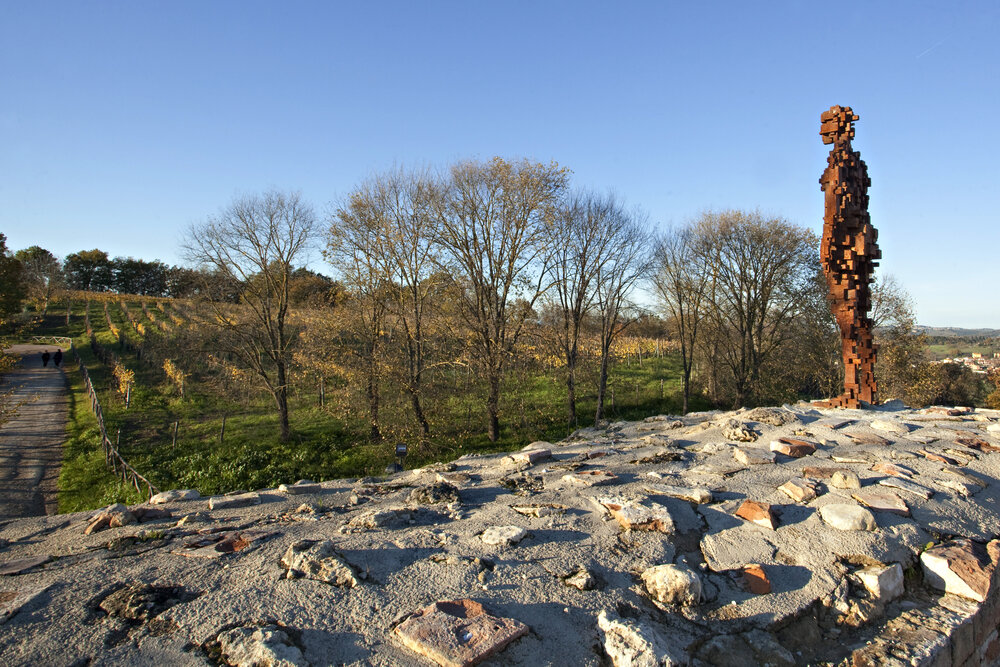For the IX edition of Arte all’Arte, curators Achille Bonito Oliva and James Putnam invited Antony Gormley to develop a site-specific project in Poggibonsi, Make Space, Take Place.
“The realization of Gormley’s project involved the production and installation of seven iron sculptures based on body casts. Announcements were published in local and national newspapers to find volunteers willing to have a plaster cast made of their body, which would then be cast in iron. From those who responded, six citizens of Poggibonsi and one passerby were randomly selected.
A workshop was set up in the city to produce the casts, which were later sent to the artist’s studio in the United Kingdom. Rectangular blocks of polystyrene were cut, glued, and shaped to match the contours of the casts, then cast in an industrial foundry in Sheffield using the ‘lost polystyrene process’.
Once completed, the seven pixelated iron sculptures were transported back to Poggibonsi to be installed in seven sites around the city—places that are both familiar in the present and forgotten from the past—ranging from a square to a paved street, a park, a supermarket, and a train platform.
From the beginning, the artist considered the creation of a collective memory map as an essential part of the project. Parallel to the production of the sculptures, a unique sociological survey was carried out, from which that map was created. The residents of Poggibonsi were asked a series of questions about the kinds of memories they instinctively associated with specific places in the city.
The map and the completed questionnaires were exhibited in a local tourist center, alongside archival photographs of the city and its inhabitants, as well as documentation of the casting and molding processes of the sculptures. According to Gormley, “The purpose of the sculptures is to serve as catalysts—both as transmitters and receivers of hidden thoughts and feelings, coordinates for reconsidering the collective condition of the city.”
Gormley pointed out how his pixelated sculptures align with an aerial view of Poggibonsi, while the town itself can be compared to a human body with arteries and vessels, appearing as streets, neighborhoods, and districts. He related his project to psychogeography, which in many ways provides a new departure from the already established idea of site-specific art.
Broadly speaking, psychogeography can be defined as the study of the influence of the physical environment on individuals’ emotions and behavior. The concept was explored and developed by the Situationist movement in the late 1950s, and has more recently been taken up by artists, radical thinkers, and, in academic circles, geography researchers.
The idea is that by walking or wandering through a town or city, we can attempt an interpretive reading or architectural understanding of the place. It becomes possible to discover how certain zones, streets, or buildings resonate with mental states, inclinations, and desires—and to find reasons to move differently through the space than originally intended.
What a town like Poggibonsi can offer, then, is a provocation for acts of meaning-making—a map waiting for a reader full of experiences, memories, and people’s stories. Gormley’s sculptures form a network of sites, allowing the citizens of Poggibonsi to draw a map not only of destinations for walking and reflection, but also of symbolic destinations within their own lives. (…)"
James Putnam, “Arte All’Arte IX”, 2004

